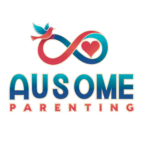Seeing Your Child Before Anything Else
As a parenting advocate and author, I’ve learned that communication extends beyond words. Speech is just one of many forms of expression. For parents of nonverbal or low-verbal autistic children, it’s crucial to embrace strategies that enable communication in other ways.

A core approach is adopting an identity-first perspective. This means seeing autism as an integral part of your child’s identity. Using language like “my nonverbal child” rather than “my child with autism” highlights their individuality and potential. Identity-first language centers your child’s humanity, reinforcing that they are so much more than a label or diagnosis. This shift can bring comfort and clarity, reminding parents that their child’s essence remains unchanged.
The Superpowers of Neurodiversity
What Is Neurodiversity?
Neurodiversity recognizes neurological differences as natural variations, not deficits. Viewing nonverbal communication through this lens highlights the richness and strengths that come with diverse ways of thinking and expressing. This perspective challenges outdated beliefs that speech is the only measure of intelligence or capability.
Celebrating Nonverbal Strengths
Nonverbal individuals often excel in areas that may be overlooked in highly verbal individuals. Some potential strengths include:
- Enhanced visual-spatial skills
- Exceptional memory and pattern recognition
- Deep focus on specific interests
By sharing stories of nonverbal individuals who have thrived in various fields, parents can see beyond speech limitations to their child’s unique strengths and capabilities.
Communication Goes Beyond Words
How Nonverbal Minds Thrive
Nonverbal children often process the world in highly sensory, detailed ways. They may experience heightened connections to visual, auditory, or kinetic input, creating a vivid internal world. By focusing on alternative communication methods, you can unlock your child’s ability to share thoughts, feelings, and desires.
Exploring Communication Options
Many tools and techniques can help nonverbal children express themselves:
- Picture Exchange Communication Systems (PECS)
- American Sign Language (ASL)
- Augmentative and Alternative Communication (AAC) devices
Finding the right method depends on your child’s strengths and preferences. Incorporating these tools into everyday activities can lead to meaningful breakthroughs in connection and understanding.
From Limits to Possibilities: Supporting Your Child’s Journey
Celebrating Milestones in Communication
The joy of seeing a nonverbal child express humor, desires, or emotions in their unique way is incomparable. Whether through typing, signing, or using assistive devices, these moments redefine what is possible. With compassionate guidance, children can:
- Make requests and share preferences
- Build friendships and participate in school activities
- Pursue their goals with confidence
Embracing an Identity-First, Neurodiversity-Based Mindset
When families embrace neurodiversity and focus on strengths, they empower their children to flourish. Viewing communication differences as part of human diversity opens doors to boundless possibilities.

Frequently Asked Questions About Nonverbal Communication
What Does Nonverbal Communication Include?
Nonverbal communication encompasses facial expressions, gestures, body language, and alternative tools like AAC devices or sign language. It’s a rich and effective way for individuals to express themselves.
How Can I Support My Nonverbal Child?
Support starts with understanding your child’s strengths and exploring communication tools tailored to their needs. Patience, consistency, and celebrating small victories are essential.
Are Nonverbal Children Less Intelligent?
Absolutely not. Intelligence and speech are not synonymous. Nonverbal children often have unique strengths that shine in areas such as memory, creativity, and problem-solving.
Final Thoughts
Parenting a nonverbal child comes with unique challenges, but also incredible opportunities for growth and connection. By adopting an identity-first approach and celebrating neurodiversity, you empower your child to thrive on their own terms.
Have you noticed unique skills or preferences in your nonverbal child? Share your experiences to inspire other families on this journey. Together, we can foster inclusion and appreciation for the diverse ways children communicate.
Meta Description:
Learn how to empower your nonverbal child with identity-first parenting strategies. Discover the strengths of neurodiversity and alternative communication tools.
Keywords:
Main keywords: nonverbal communication, identity-first parenting, neurodiversity
Semantic keywords: alternative communication methods, nonverbal autism support, AAC devices, parenting nonverbal children


